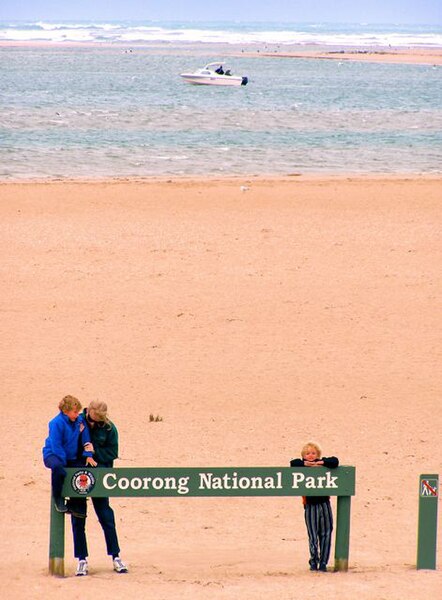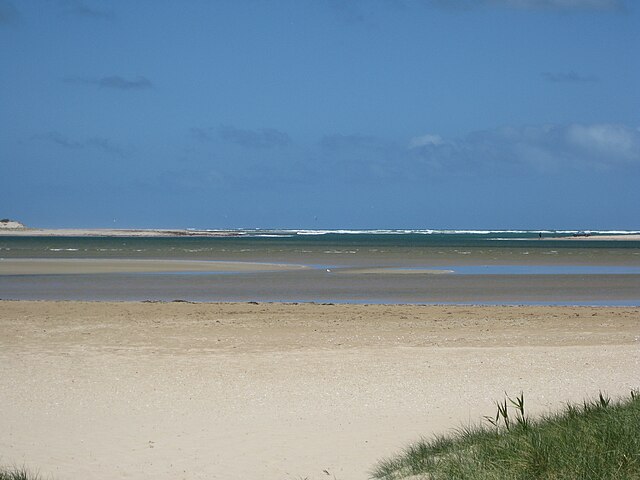Murray Mouth is the point at which the River Murray meets the Southern Ocean. The Murray Mouth's location is changeable. Historical records show that the channel out to sea moves along the sand dunes over time. At times of greater river flow and rough seas, the two bodies of water would erode the sand dunes to create a new channel leaving the old one to silt and disappear.
The narrow Murray Mouth in the background as viewed from Hindmarsh Island, November 2006
Dredging the Murray Mouth. View from Hindmarsh Island
The Murray River is a river in Southeastern Australia. It is Australia's longest river at 2,508 km (1,558 mi) extent. Its tributaries include five of the next six longest rivers of Australia. Together with that of the Murray, the catchments of these rivers form the Murray–Darling basin, which covers about one-seventh the area of Australia. It is widely considered Australia's most important irrigated region.
Lower course of the Murray River at Murray Bridge
The confluence of the Murray River and Murrumbidgee River near the town of Boundary Bend
The confluence of the Darling and Murray Rivers at Wentworth, New South Wales
Murray Mouth viewed from Hindmarsh Island






